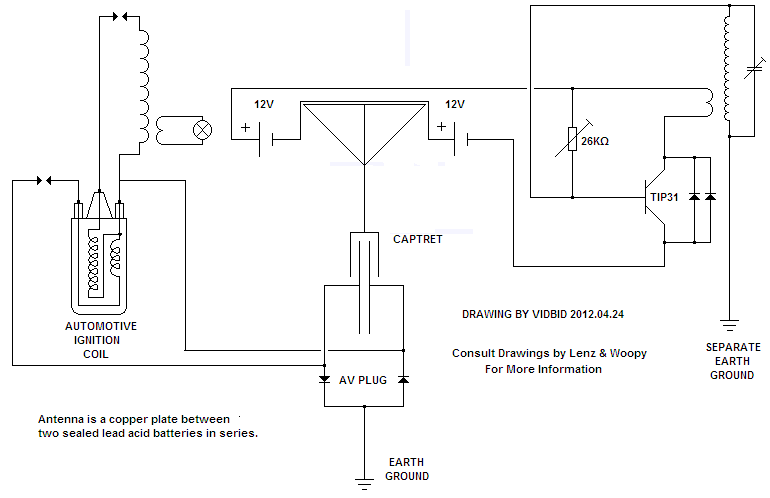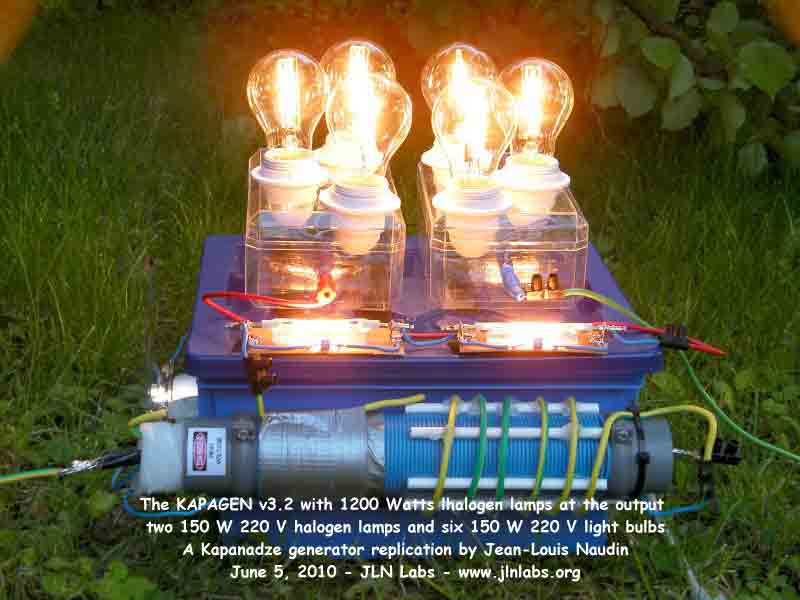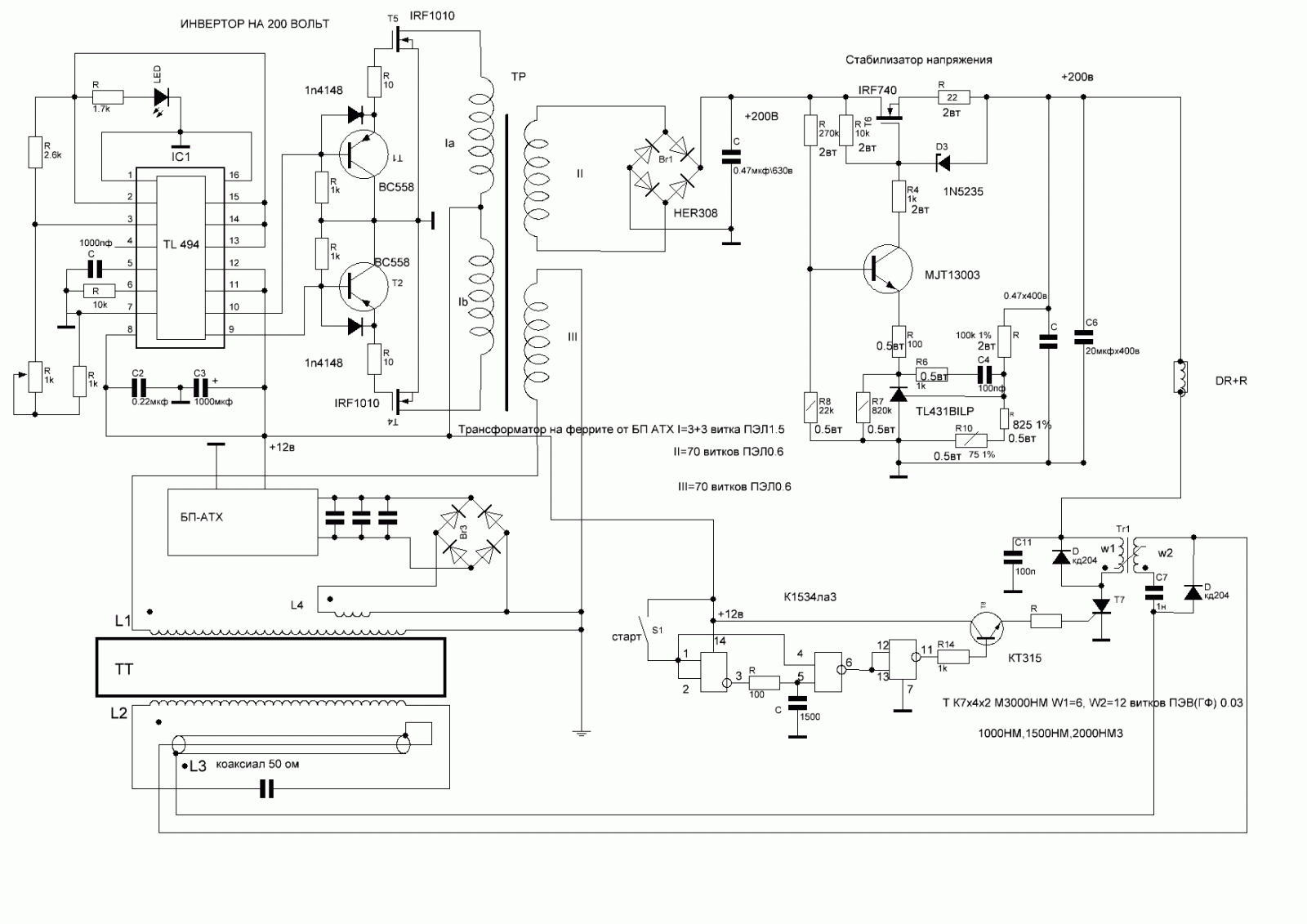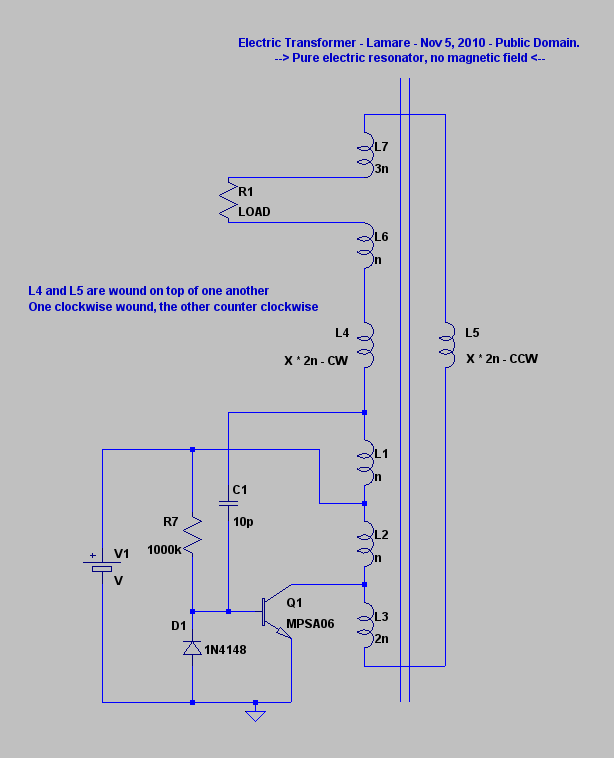
Kapagen 8

Thank you for the diagram, Zinc. It looks very interesting. Please keep us informed of any results. I am MrFlathunter on YouTube, and you commented on my 12V.
The circuit in question likely pertains to a 12V system, which is commonly used in various applications, including automotive, battery-powered devices, and small electronics. A typical 12V circuit may include components such as voltage regulators, capacitors, resistors, and diodes to ensure stable operation and protection against voltage spikes.
In a standard 12V circuit schematic, the power source is typically represented by a battery symbol, providing the necessary voltage. Voltage regulators can be included to maintain a consistent output voltage, even when the input voltage fluctuates. Capacitors may be used for filtering and smoothing the output, while resistors can help limit current and divide voltage as needed.
Diodes are essential in protecting the circuit from reverse polarity, allowing current to flow in one direction only. Additionally, connectors may be depicted to illustrate how the circuit interfaces with other components or systems.
Overall, the design of a 12V circuit can vary significantly based on its intended application, but the fundamental principles of circuit design remain consistent, focusing on efficiency, stability, and safety.Thanks for the diagram Zinc! Loooks very interesting - please keep us informed of any results. I`m MrFlathunter on Youtube and you commented on my 12V .. 🔗 External reference
The circuit in question likely pertains to a 12V system, which is commonly used in various applications, including automotive, battery-powered devices, and small electronics. A typical 12V circuit may include components such as voltage regulators, capacitors, resistors, and diodes to ensure stable operation and protection against voltage spikes.
In a standard 12V circuit schematic, the power source is typically represented by a battery symbol, providing the necessary voltage. Voltage regulators can be included to maintain a consistent output voltage, even when the input voltage fluctuates. Capacitors may be used for filtering and smoothing the output, while resistors can help limit current and divide voltage as needed.
Diodes are essential in protecting the circuit from reverse polarity, allowing current to flow in one direction only. Additionally, connectors may be depicted to illustrate how the circuit interfaces with other components or systems.
Overall, the design of a 12V circuit can vary significantly based on its intended application, but the fundamental principles of circuit design remain consistent, focusing on efficiency, stability, and safety.Thanks for the diagram Zinc! Loooks very interesting - please keep us informed of any results. I`m MrFlathunter on Youtube and you commented on my 12V .. 🔗 External reference


